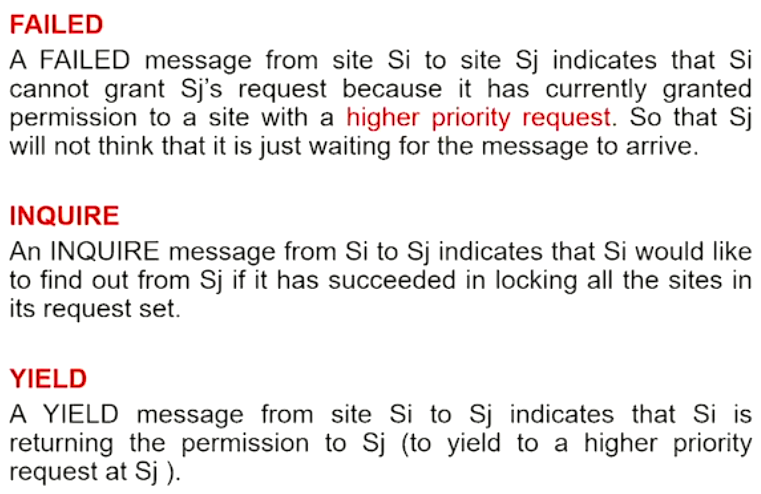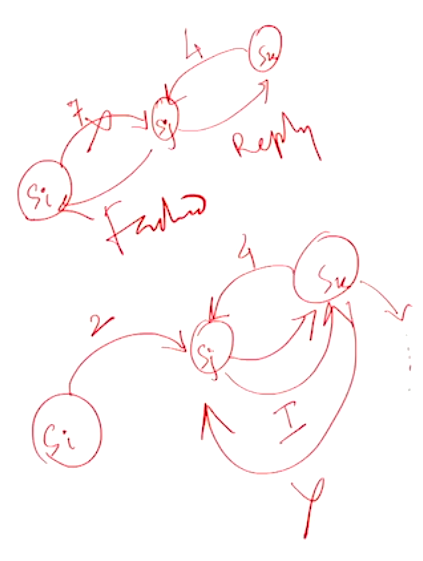Module 5#
Mutual Exclusion#
Challenges while using shared resources#
- Simultaneous updates and read to a directory or a file
- Two processes sending their data to a printer can create chaos to a shared printer
So there is a problem of giving exclusive access to the processes that are asking for these resources
Requirements to be satisfied for such algos#
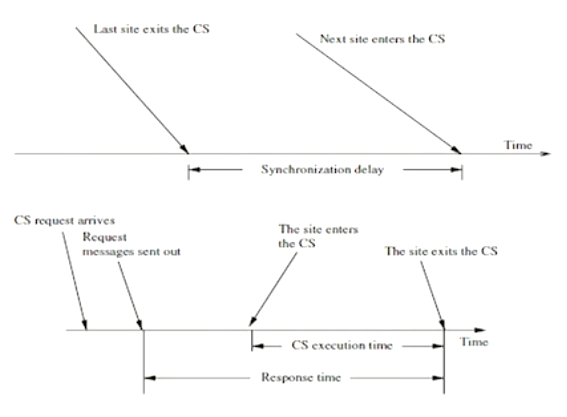
- Performance is measured in terms of
- No. of messages required for CS invocation
- Synchronization delay
- Response time
- System throughput = \(1/(sd + E)\)
A centralized algorithm#
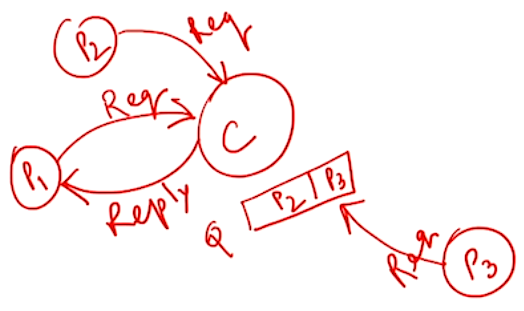
- A central controller \(C\) with a queue \(Q\) for deferring replies
- Request, reply and release messages would have to be sent
- Not reliable since one node is responsible and there are several performance bottlenecks
Lamports Distributed Mutual Exclusion#
Requesting the critical section#
- When a \(S_i\) wants to enter the \(CS\), it sends a \(REQUEST(T=tsi, i)\) message to all the sites in its request set \(R_i\) and places the request on \(RQ_i\)
- When a site \(S_j\) receives a \(REQUEST(tsi, i)\) message from the site \(S_i\), it returns a timestamped \(REPLY\) message to \(S_i\) and places site \(S_i\) request on \(RQ_j\)
Executing the CS#
Site \(S_i\) enters the CS when the two following conditions hold:
1. \(S_i\) has received a message with timestamp larger than \((tsi, i)\) from all other sites
2. \(S_i\) request is at the top of the \(RQ_i\)
Releasing the CS#
- Site \(S_i\), upon exiting the \(CS\), removes its request from the top of its \(RQ\) and sends a timestamped \(RELEASE\) message to all the sites in its request set \(R_i\)
- When a site \(S_j\) receives this \(RELEASE\) message, it removes the \(REQUEST\) form \(S_i\) from its \(RQ\)
- After this, its own process can come to the top of the queue and enter into the \(CS\)
Example#
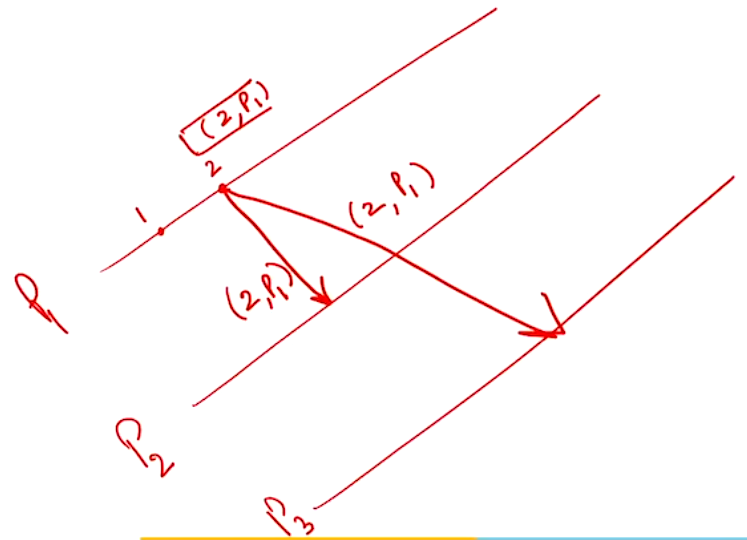
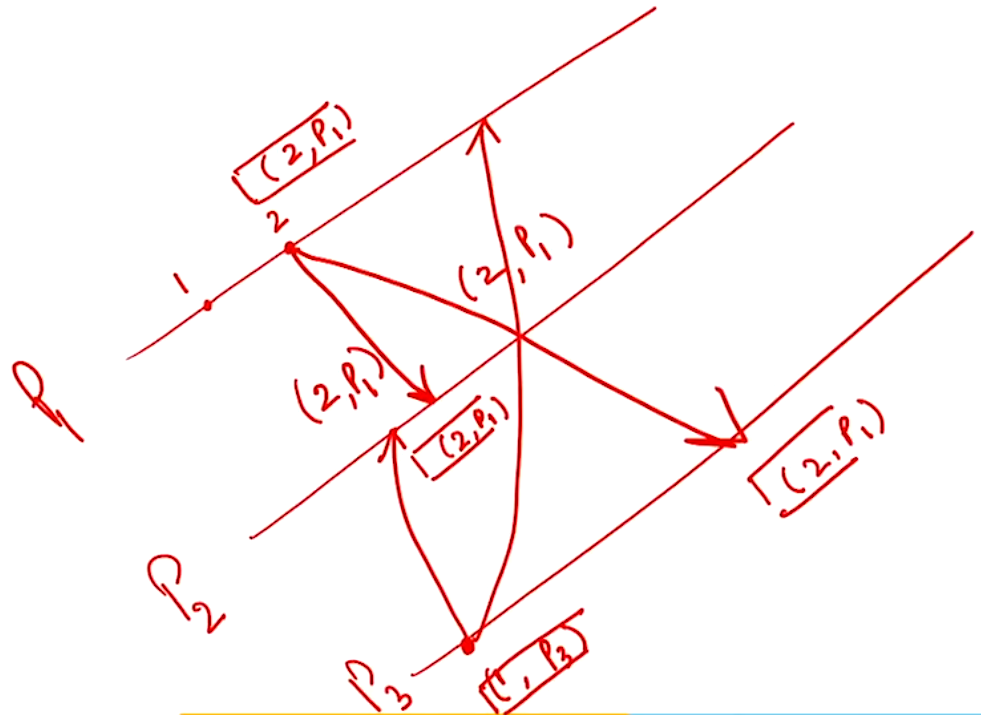
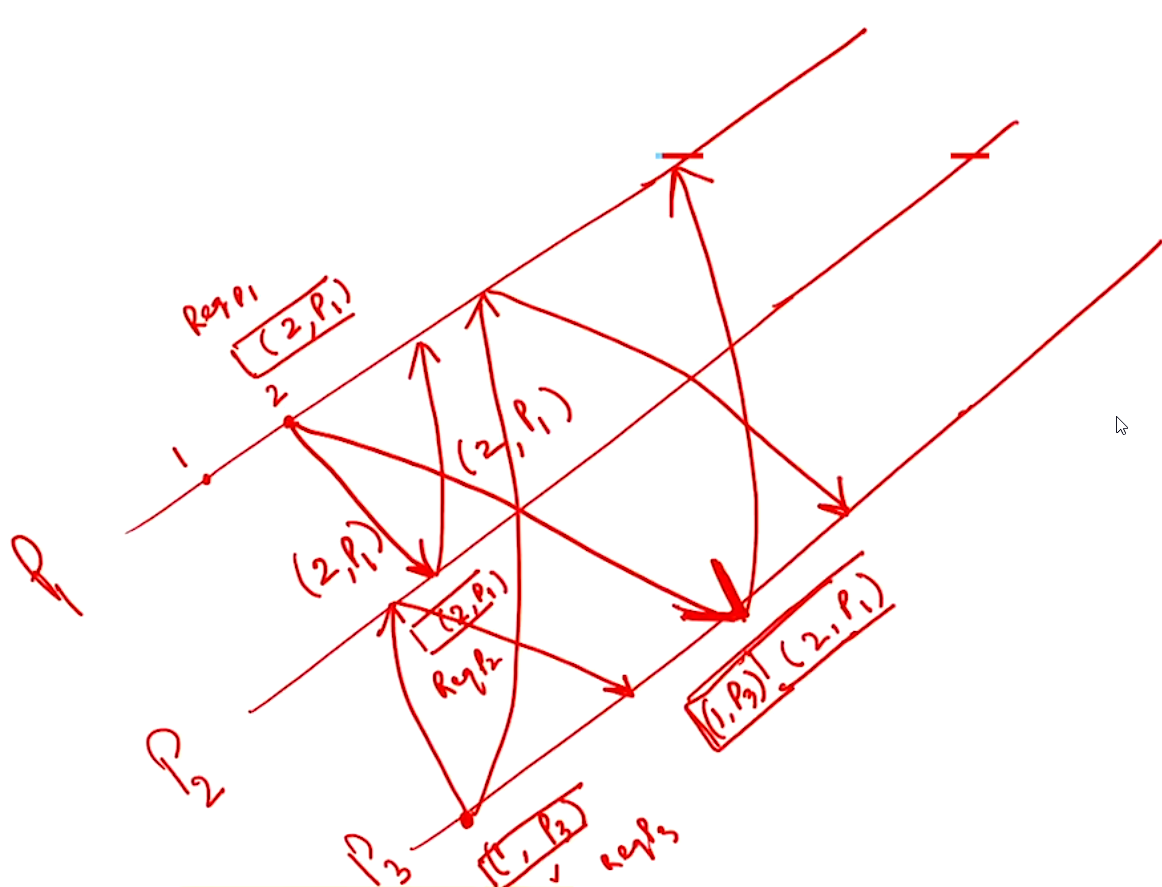
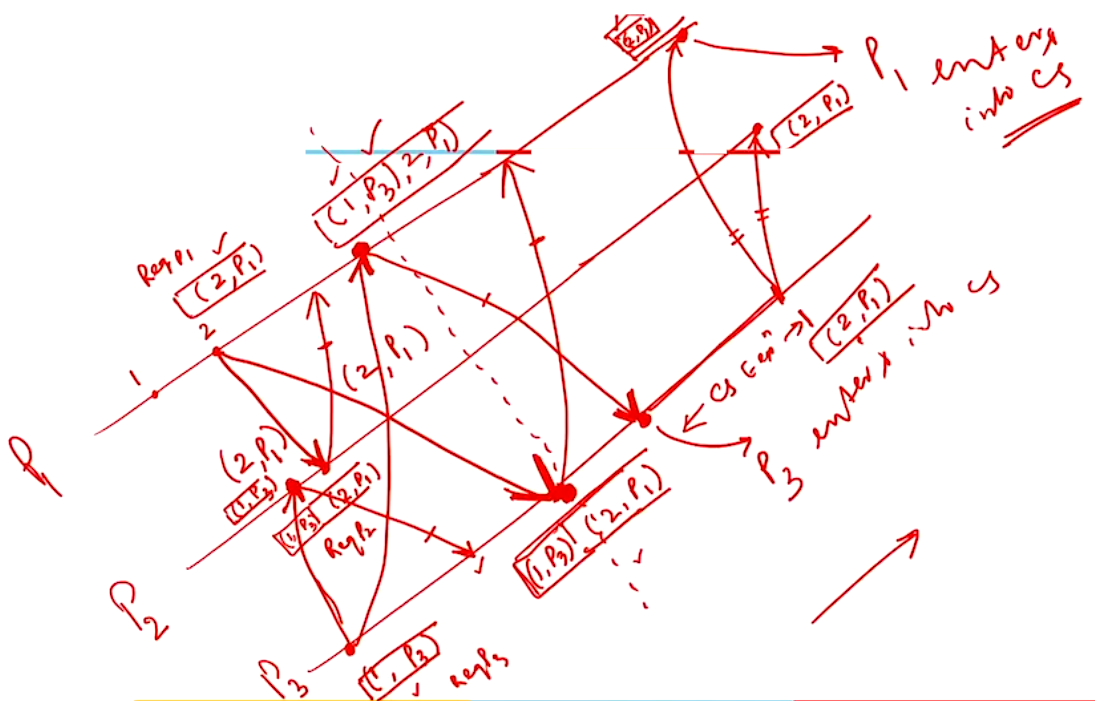
Correctness#
- There can never be two different sites \(S_i\) and \(S_j\) being in the \(CS\) since, the \(RQ\) makes sure the order of requests is maintained
- The total Number of messages \(= 3 (N - 1)\)
- \(REQUEST = N - 1\)
- \(REPLY = N - 1\)
- \(RELEASE = N - 1\)
Ricart Agrawala#
Requesting Site#
A site P_i sends a message REQUEST(ts, i) to all sites
Receiving Site#
- Upon receiving the request message, the site \(P_j\) will immediately send a timestamped \(REPLY(ts, j)\) message if and only if :
- \(P_j\) is not requesting or executing the \(CS\) OR
- \(P_j\) is requesting the CS buyt sent a request with a higher \(ts\) than the \(ts\) of \(REQUEST\) \(P_i\)
- Else, \(P_j\) will defer the \(REPLY\) to \(P_i\)
Example#
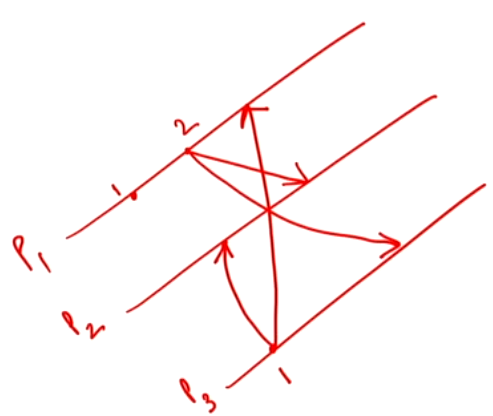
- \(P_2\) sends \(REPLY\) to \(P_3\) and \(P_1\) immediately
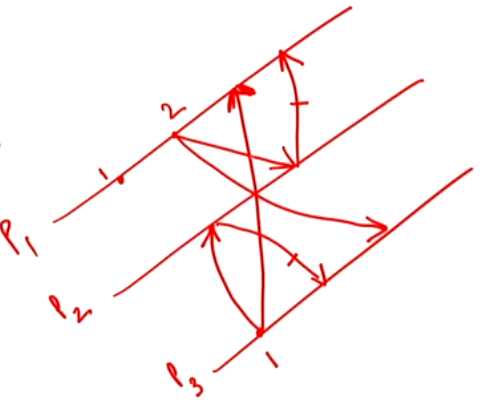
- \(P_1\) sends \(REPLY\) to \(P_3\) since the \(ts\) in the \(REQUEST\) is \(1\) and the \(ts\) for \(P_1\) \(REQUEST\) is \(2\) and \(1 < 2\)
- \(P_3\) defers \(REPLY\) to \(P_1\) since the \(ts\) in the \(REQUEST\) is \(2\) and the \(ts\) for \(P_3\) \(REQUEST\) is \(1\) and \(2 > 1\)
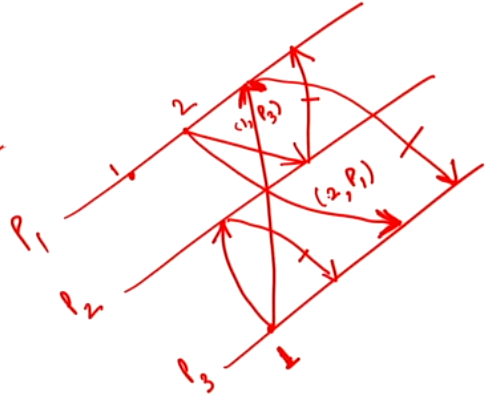
- \(P_3\) enters into \(CS\) since both the replies are received.
- Once \(P_3\) finishes executing it will see the deferred queue to see who to send the reply to.
- After sending reply \(P_1\) goes into \(CS\)
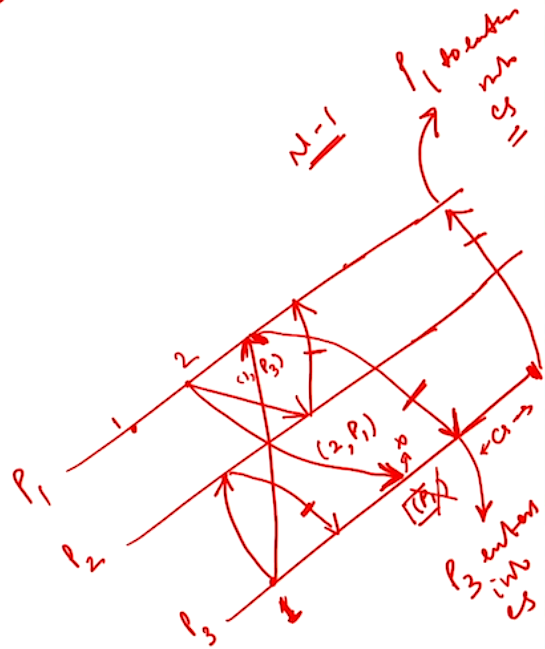
Maekawas Algorithm#
Some properties#
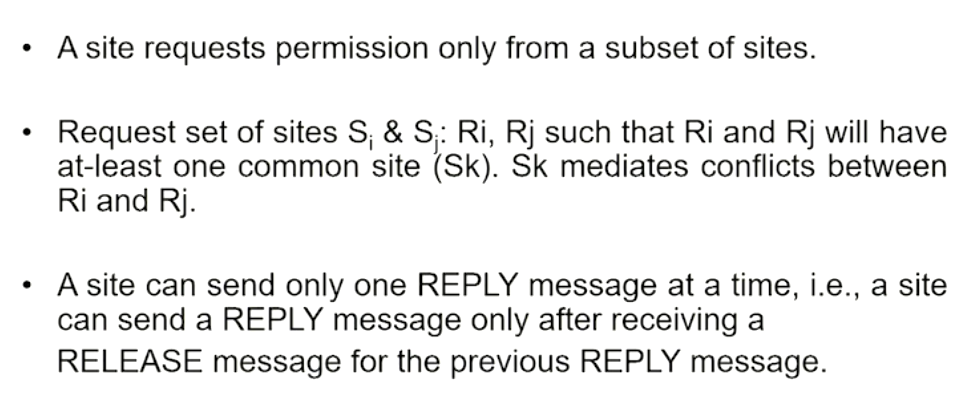
Request Set rules#
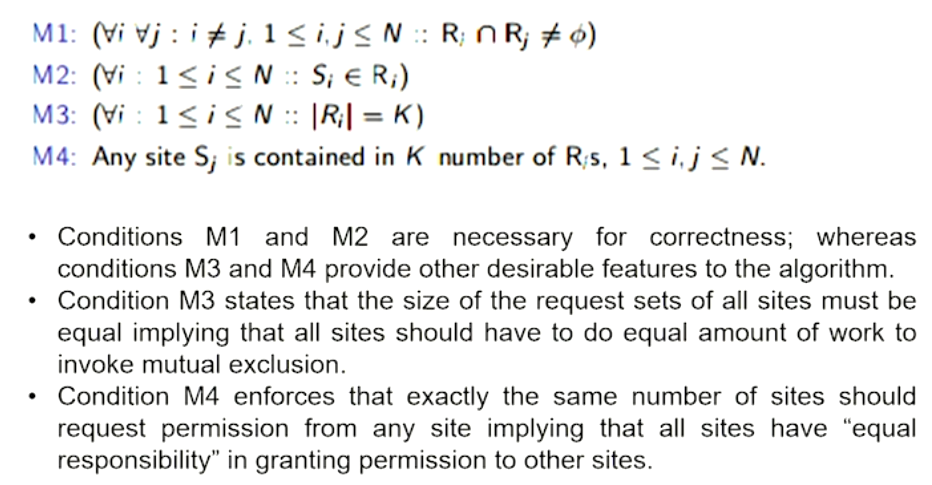
Also \(N = K(K - 1) + 1\)
Example Request sets#
\(N = 3\)
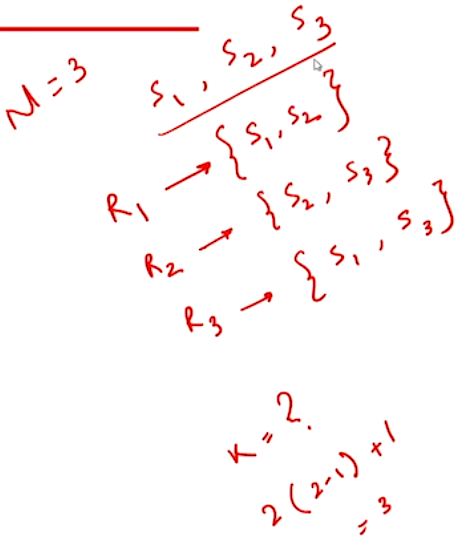
\(N = 7\)
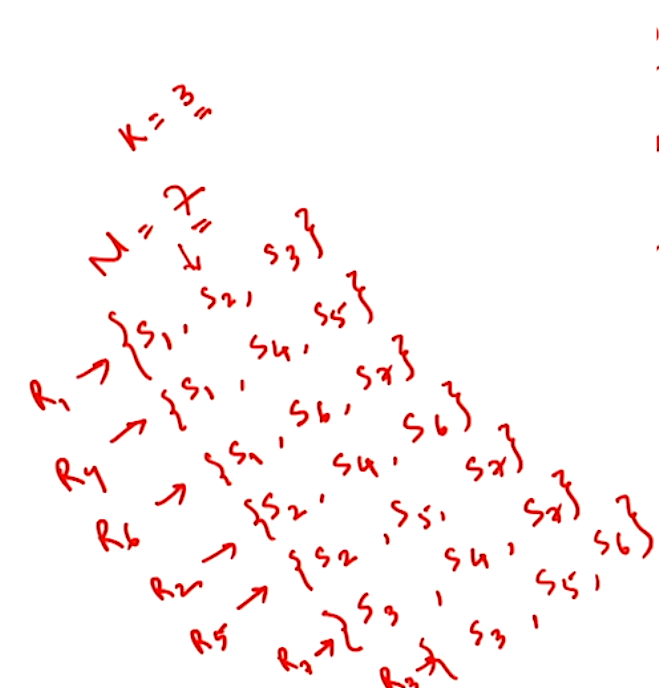
\(N = 13\)
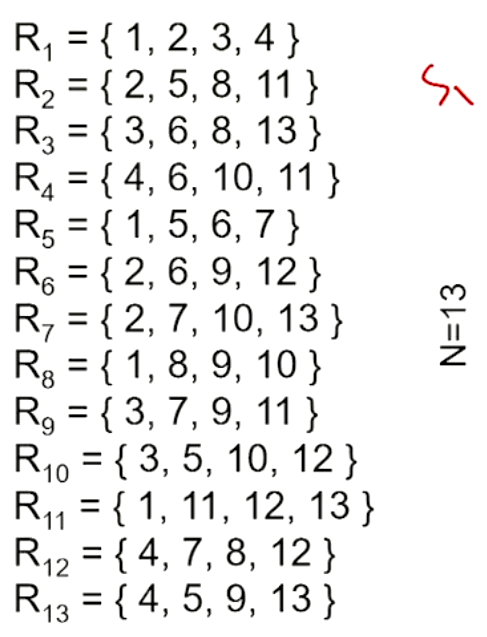
Algorithm#
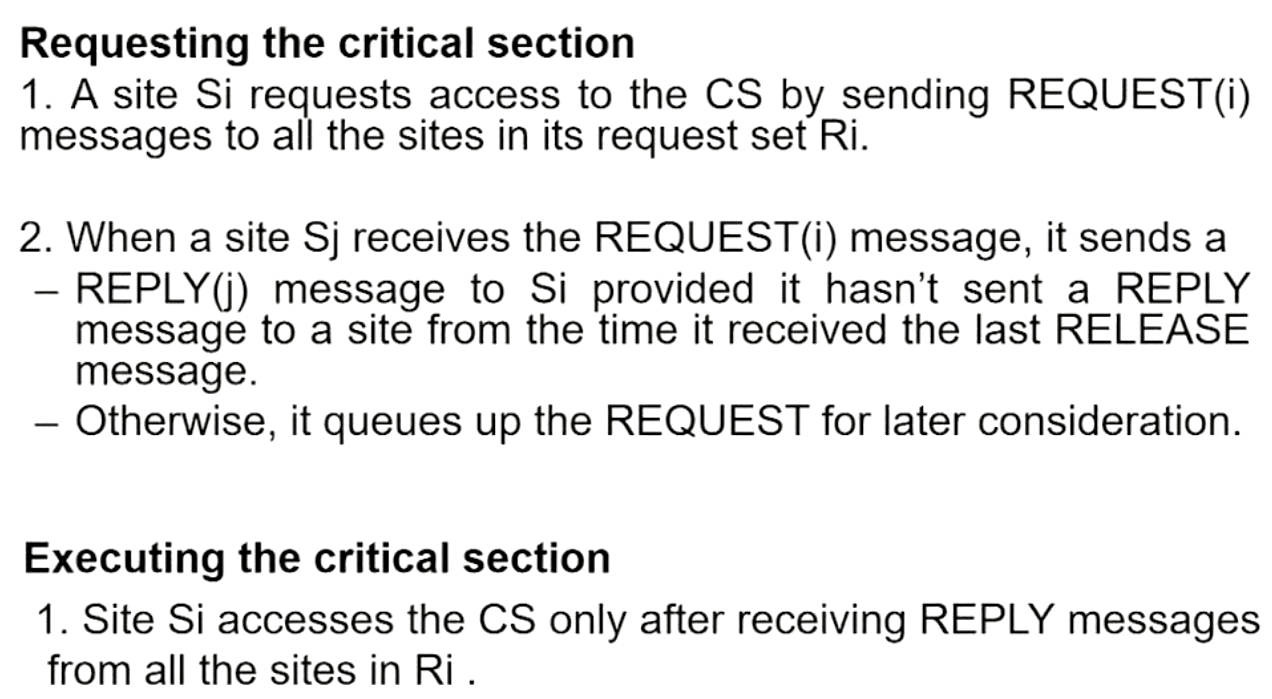

Example#
Normal Execution#
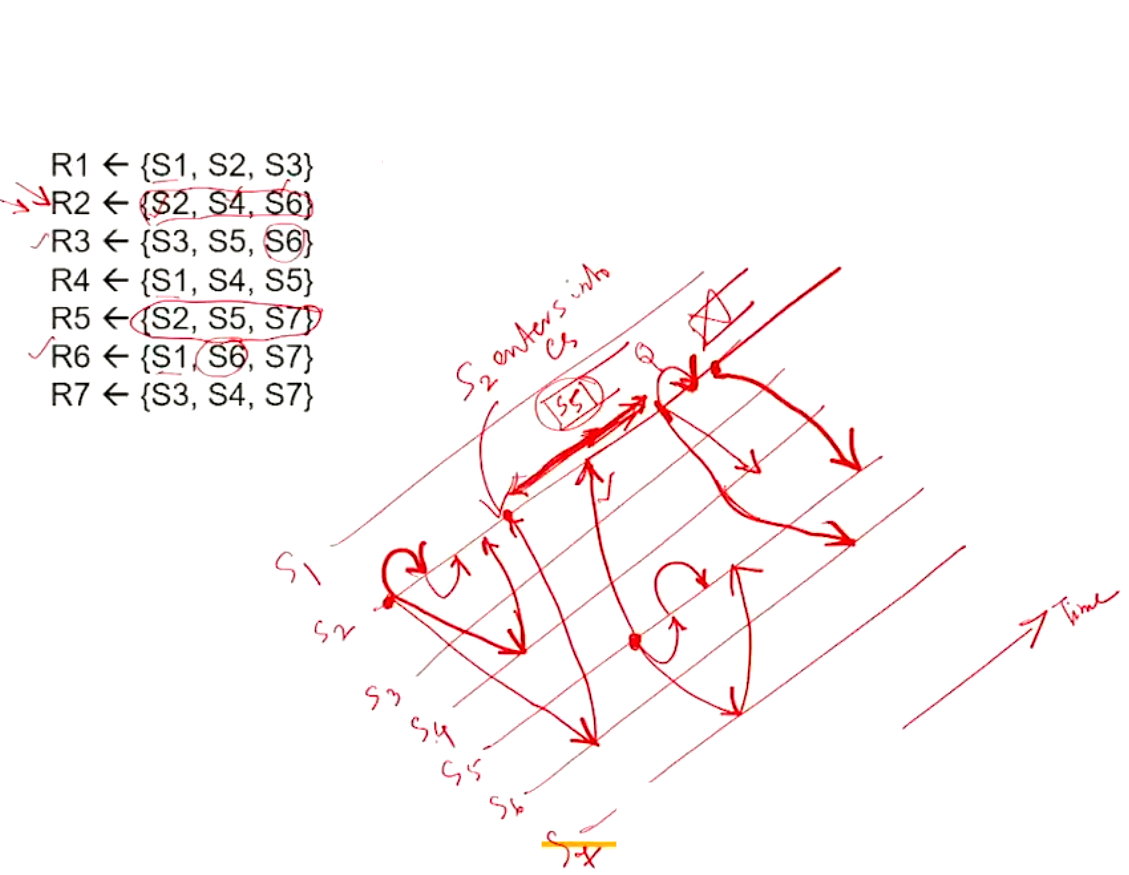
Deadlock Case#
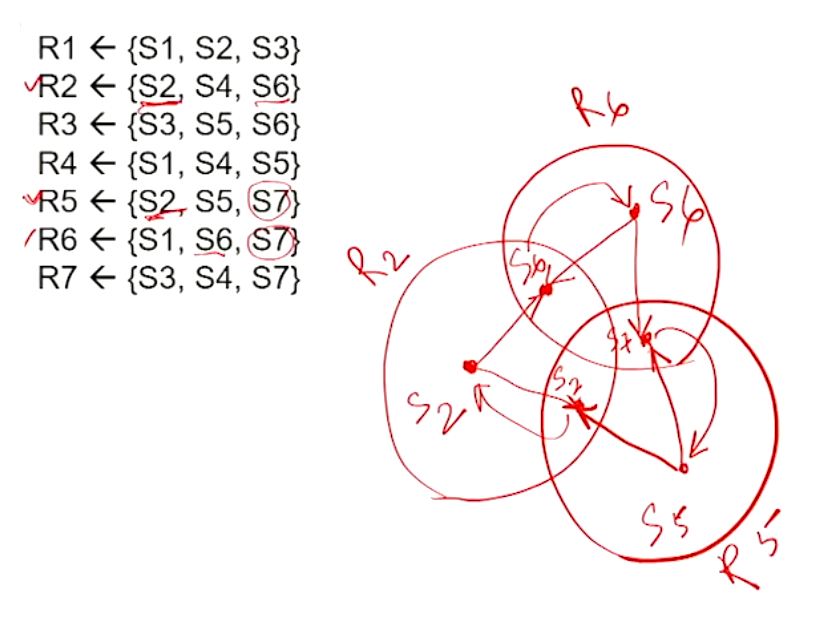
Handling Deadlocks#
